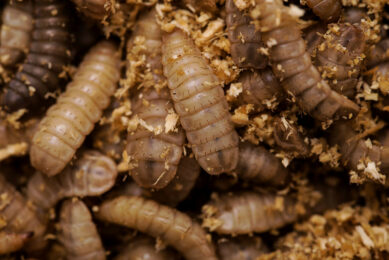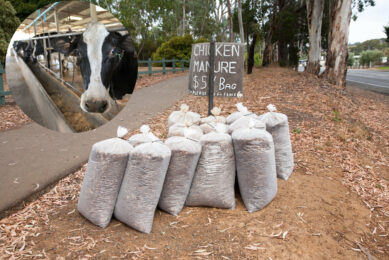Health risks associated with contaminants in minerals

At a round table meeting in the Netherlands organised by Alltech the underexposed subject of issues dealing with (trace) minerals in animal feeds were discussed. One of the speakers was David Byrne, former EU Commissioner for Health & Consumer Protection, who expressed his view on health risks associated with contaminants in minerals.
“Just over ten years ago I was appointed EU Commissioner for Health and Consumer Protection with particular responsibility for the safety of food and animal feed. At that time the consumers of Europe were shocked by the food safety crises caused by the mad cow disease in the UK and the dioxin crisis in Belgium. The government in Belgium was thrown out of office.
It soon became clear to everybody that the common cause of these crises was the contamination in animal feed. For the first time ever media attention was focussed on the feed industry.
During my five years as Commissioner in Brussels I brought forward many measures designed to improve food and feed safety in Europe. A white paper on food safety was published. The General Food Law 2002 was enacted and the European Food Safety Authority was established. he EU now has the most comprehensive food safety laws in the world. They are used as the benchmark and widely copied by others seeking to raise their food safety standards, including by China where new laws came into force in June last year.
Even with our high standards in Europe, improvements are often necessary particularly in the areas of surveillance and control.
Risks to health and business
We are now becoming increasingly aware that contaminants in animal rations pose a risk to animal and human health. Such contaminants also pose a risk to the health of businesses in the feed industry. The dioxin crisis in Ireland in 2008 caused renewed concerns with consequences for food safety and consumer confidence. When such outbreaks occur consumers lose confidence in:
- The safety of the food supply;
- Industry’s commitment to produce safe food; and
- The ability of the regulators to effectively police the food chain.
While it is true that the consumer can be protected from the consequences of contaminated food by an effective deployment of the Rapid Alert System in food and feed, such measures can be extremely expensive and cause widespread reputational damage to the businesses concerned.
Food chain labyrinth
Recalls can be extremely complex. The modern food chain is now more like a labyrinth than a straight line with global sourcing of agrochemicals, pharmaceuticals, minerals, vitamins and other additives. Along the food chain many foods contain multiple ingredients often from many countries and even continents, where routinely there is co-mingling of products from several processors, within additives and spices widely sourced from a global market place.
We also know that not all processors have the same high standards and not all countries have the same controls or enforcement capabilities. Recalls, when ingredients are contaminated, are extremely difficult and costly. We have learned from the Irish dioxin crisis that an inability to distinguish uncontaminated from contaminated in the supply chain inevitably leads to the recall and destruction of large quantities of perfectly safe food and greatly adds to consumer anxiety.
Limits of detection
Analytical chemists are continuously improving the limits of detection and deciding what action to take at levels of parts per billion, or parts per trillion. Whereas this is a major issue for risk managers requiring difficult decisions to be made, it is also a huge challenge for risk communicators operating in a sound-byte dominated media, trying to explain to the public that “a genotoxic carcinogen is in their foods but at levels ‘unlikely’ to do them any harm!”
Bad news travels faster than good news. In addition, in a crisis mis-information becomes a common currency. Electronic bulletins like “Google Alerts” keep food safety professionals and journalists also, abreast of the latest developments throughout the world with news bulletins often accompanied by video clips. Mobile phones with cameras, You Tube and Twitter have created new media channels with citizen journalists ensuring that no story remains untold.
It is now quite common for public health bodies to monitor the global media as part of their early warning systems. Public perception is often informed by sensational news coverage and items are placed higher on the agenda of the policy makers as a result of the intensity of the media coverage of an issue.
All of this reinforces the value of the advice to the food industry: Prevention is better than cure.
Feed hygiene law
The Regulation on Feed Hygiene (EU Reg 183/2005) outlines hygiene and safety requirements for the entire feed chain including additives and premixes and governs the animal feed industry, which also includes the ingredient and premix producers as part of the human food chain. Producers are responsible for the safety of their products. This Regulation covers the manufacturing and distribution of feed additives. It stresses the need for the application of HACCP principles and promotes the establishment of codes of practice in the feed chain. The Regulation also provides for the control of levels of undesirable substances and products such as heavy metals, pesticides and aflatoxins.
The European Food Safety Authority is charged with the task of risk assessment, advice to the European Commission as the risk manager, and communication to the public. The Panel that deals with additives and animal feed generally is called ‘FEEDAP’. The FEEDAP Panel provides independent scientific advice on the safety and efficacy of additives used in animal feed. The Panel evaluates for the safety of the consumer and the environment. A feed additive cannot be placed on the market without the evaluation and approval of this Panel.
Regulation (EC) No 1831/2003 entered into force on 7 November 2003 to establish a Community procedure for authorising the placing on the market and use of feed additives.
Organic trace minerals
Emerging scientific opinion is now demonstrating that it is possible to replace current standard high quantities of inorganic trace minerals in feed with far lower quantities of yeast based organic minerals, and still maintain the same level, or even achieve improved levels, of animal performance. The use of such organic minerals provides a clear benefit to public health and the environment in that the Copper, Zinc, and Manganese excretion by livestock, particularly poultry, is reduced by more than 40%!
Procurement policies are key as a company’s reputation, and possibly future, is only as secure as its weakest supplier in the food chain. Therefore independent third party quality assurance has become increasingly important. If the legal requirements are the minimum requirements, a diligent company using quality assured supplies is in the honours class. Even in the best run systems things can go wrong so an early warning and response system is essential. The EU Rapid Alert System is demonstrating that there are variable standards internationally and there are operators who could discredit an entire sector by careless or wilful actions.
Rapid alerts
In 2009 there were four RASFF notifications due to ‘premixes’. One RASFF was related to the content of selenium (343 mg/kg – ppm) from the UK, another was related to the incorporation rate (0.3 %) specified for broilers from Poland, via the Slovak Republic, another was related to incorrect labelling on complementary feed for piglets from the Netherlands and another was related to dioxins (1.60; 1.30; 1.90 pg WHO TEQ/g) in feed premix from Brazil.
Many ‘feed additive’ notifications were related to contamination of inorganic trace elements – such as: lead contamination of manganese oxide; and lead and cadmium contamination of zinc oxide. An earlier incident in the US was also related to contaminated zinc oxide and premixes containing zinc oxide. In this case, the zinc oxide was contaminated with dioxins. The premix was destined for use in livestock, aquaculture, and poultry feed and feed products. The FDA requested the recall of certain animal feed and feed products. The recalled products had been distributed to feed manufacturers and suppliers in eleven states of the US and in Canada.
The global trade in food and feed increases our dependence on one another for safety. The health of citizens, and company brands, in one country are often dependent on the controls in operation in another so harmonisation and consistency are the name of the game. The problems we face in the modern feed and food chain are similar in all countries and require global solutions with similar standards, good communication and collaboration between all national and international agencies. Industry stakeholders need to be convinced that prevention is better than crisis management.
Borrowing the words of President John F. Kennedy –
“Ask not what the regulators can do for you
but what you can do for yourselves”.
but what you can do for yourselves”.
Without doubt when a crisis occurs regulators will be quick to stress the legal position which is that the feed and food operators carry the responsibility to produce safe feed and food. The onus is on the sector to constantly look at their procedures and practices to ensure that everything that can be done is being done to reduce the risk of contamination. A better informed public, and an unforgiving media, will expect companies to have taken all reasonable steps to reduce the possibility of contamination occurring.
If new scientific approaches are available and safe companies will be expected to have adopted them in the protection of public health and the environment.”











